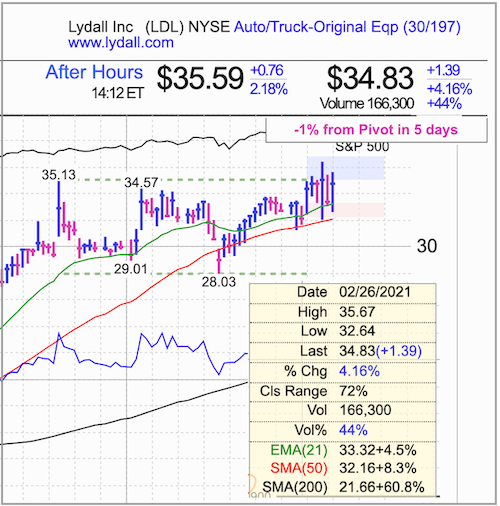This TradingView indicator displays volume based on the current timeframe. For example, on a daily chart the volume represents the volume for the day. On a weekly chart, the volume is cumulative for the week.
There is also an option to configure the volume moving average lengths. The default for a daily chart is to calculate the 50-day moving average. On a weekly chart, the default is the 10-week moving average.


